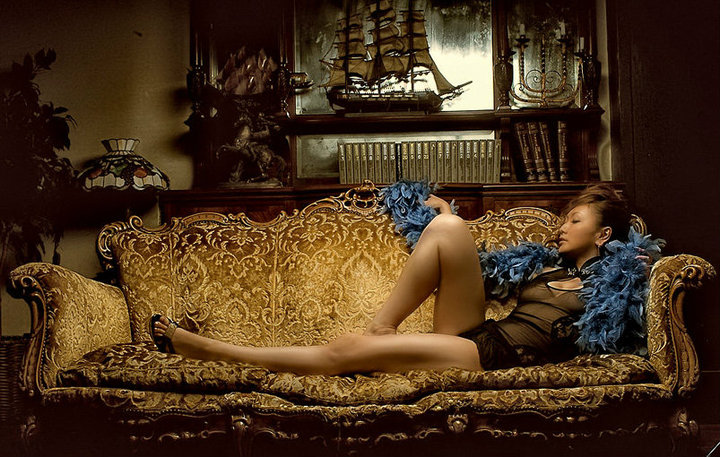Color Enhanced Diamonds
Saturday, April 30, 2011 by admin
The most common color enhancing process is known as irradiation. Brown and yellow diamonds are transformed into fancy colored diamonds by controlled exposure to periods of radiation. The color change is permanent unless the diamond is subjected to extreme heat.
High Pressure High Temperature treatment (HPHT) is another common color changing process in the diamond industry. Through exposure to extreme pressure and heat, similar to a diamond’s natural environment, yellowish diamonds can become more desirable fancy colored diamonds. Today, this process is also used to turn brownish diamonds into more costly colorless diamonds. HPHT is also a permanent color enhancing process.
Not all diamonds can undergo color enhancement. Even if the diamond can be transformed, the process could produce the wrong color, possibly a less desirable color. In some cases, the process may damage or even destroy the diamond. Any diamond color enhancement process carries a great deal of risk.
Color enhanced diamonds are inspected and labeled by the GIA. Colored diamonds enhanced by radiation or high pressure and temperature are just as beautiful as a natural fancy colored diamond and much more affordable. The color enhancement of a stone should be disclosed by the seller prior to the purchase.


 - What could be more romantic than a diamond cut in the shape of a heart? They make ideal gifts for Valentine’s day, Sweetheart’s day, as well as a perfect choice for a “promise” ring. They bear some similarity to a Pear shaped cut. The heart cut has a cleft in the wide end, and a softly tapered point at the narrow end. It is thought that the shape first became popular with diamond cutters who used it as a means of removing an inclusion from an otherwise fine stone. The stone is usually mounted with the point toward the wrist allowing the owner to admire the shape. The heart is one of the two most popular asymmetrical cuts. It is the appeal of its shape that is the most important factor in its popularity.
- What could be more romantic than a diamond cut in the shape of a heart? They make ideal gifts for Valentine’s day, Sweetheart’s day, as well as a perfect choice for a “promise” ring. They bear some similarity to a Pear shaped cut. The heart cut has a cleft in the wide end, and a softly tapered point at the narrow end. It is thought that the shape first became popular with diamond cutters who used it as a means of removing an inclusion from an otherwise fine stone. The stone is usually mounted with the point toward the wrist allowing the owner to admire the shape. The heart is one of the two most popular asymmetrical cuts. It is the appeal of its shape that is the most important factor in its popularity.  - The Emerald Cut diamond is as masculine as the Pear is feminine. It is either rectangular or square, lending itself well to men’s jewelry such as rings or watchbands. It was very popular in the Art Deco Period, as antique jewelry of the time featured step cut stones prominently. For those who like clean lines and a large amount of flash, this cut is for you.
- The Emerald Cut diamond is as masculine as the Pear is feminine. It is either rectangular or square, lending itself well to men’s jewelry such as rings or watchbands. It was very popular in the Art Deco Period, as antique jewelry of the time featured step cut stones prominently. For those who like clean lines and a large amount of flash, this cut is for you. - Ever since the modern brilliant cuts were introduced over 60 years ago, the Princess cut has been considered one of the most important. Evolving from a previous cut known as the Barion cut, the Princess is a style for cutting square and rectangular stones to gain the maximum fire and brilliance by adding extra and improved faceting. The popularity of this shape is on the rise as some of the original patents have expired and Princess cuts are becoming more available.
- Ever since the modern brilliant cuts were introduced over 60 years ago, the Princess cut has been considered one of the most important. Evolving from a previous cut known as the Barion cut, the Princess is a style for cutting square and rectangular stones to gain the maximum fire and brilliance by adding extra and improved faceting. The popularity of this shape is on the rise as some of the original patents have expired and Princess cuts are becoming more available. - The two major types of triangular diamonds, trilliants and trillions, are in the same shape family but have some very distinct differences. The Trilliant cut is a very marked triangle, its sharp points most often used as “side” stones with another shaped stone. Square or Emerald cuts are among the most popular choices to pair with the Trilliants. Although the Trilliant cut is rarely use as a solitaire stone, when it is it makes a very dramatic statement.
- The two major types of triangular diamonds, trilliants and trillions, are in the same shape family but have some very distinct differences. The Trilliant cut is a very marked triangle, its sharp points most often used as “side” stones with another shaped stone. Square or Emerald cuts are among the most popular choices to pair with the Trilliants. Although the Trilliant cut is rarely use as a solitaire stone, when it is it makes a very dramatic statement.
 2011 All Rights Reserved
2011 All Rights Reserved